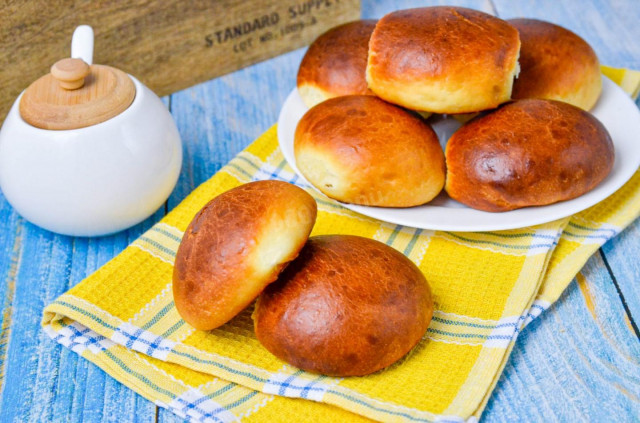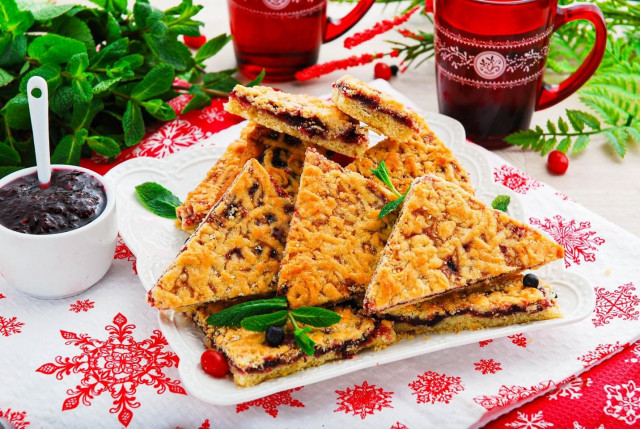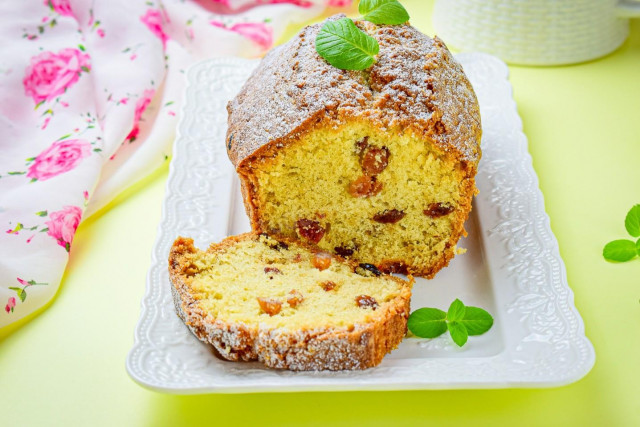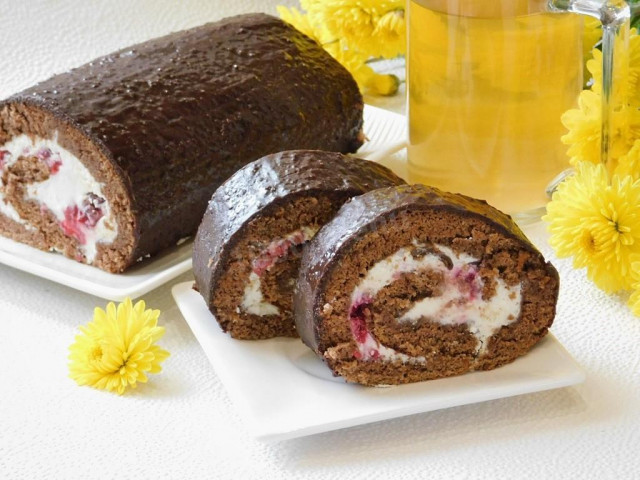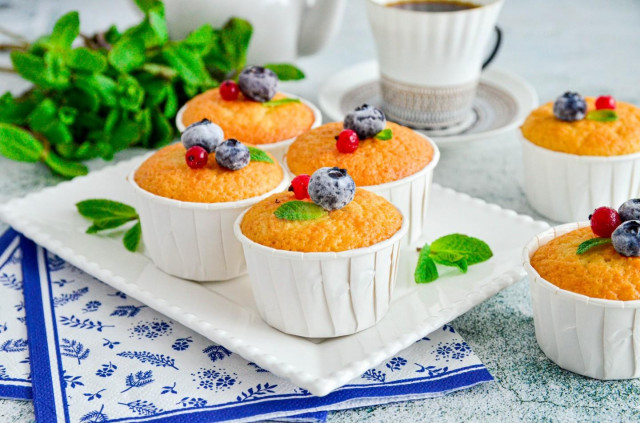Composition / ingredients
Step-by-step cooking
Step 1:
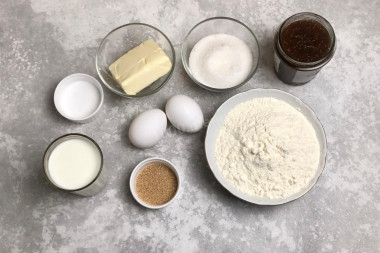
How to make buns from yeast dough with filling? Prepare the products. For yeast dough, it is important that they are all at room temperature, then it will rise faster and better. We will warm up the milk, melt the butter, and take the eggs out of the refrigerator in advance. If there is no time for this, then put them in warm water.
Step 2:

Heat the milk to 40 degrees. This is when it is not hot, but pleasantly warm. Put a tablespoon of sugar in it and pour in the yeast. Mix it up. Leave for 10 minutes. During this time, the yeast should be activated. A foam cap will rise from above the milk. if this does not happen, then replace the yeast with others.
Step 3:

While the yeast is waking up, sift the flour. Be sure to do this with any baking. Sifting enriches the flour with oxygen, which makes the products from it more lush.
Step 4:
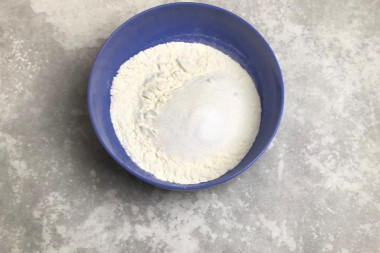
Add the remaining sugar and salt to the flour. Mix it up.
Step 5:
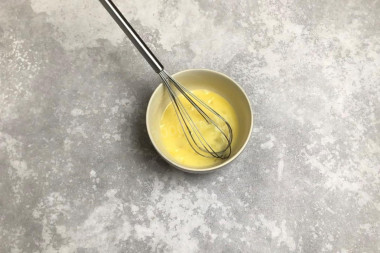
Break the eggs into a separate bowl and lightly whisk with a whisk. Be sure to wash the eggs before use, as even the seemingly clean shell may contain harmful bacteria. It is best to use food detergents and a brush.
Step 6:
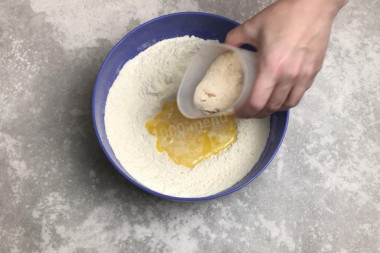
Make a hole in the center of the flour. Pour in the eggs, then the pre-melted and cooled butter. Next comes milk with yeast. Here you can see which cap should rise.
Step 7:
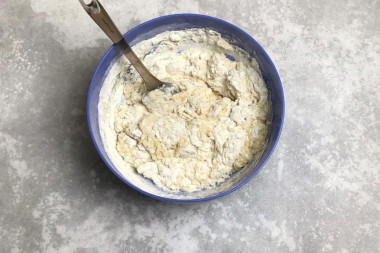
Gently start mixing the dough with a spatula.
Step 8:
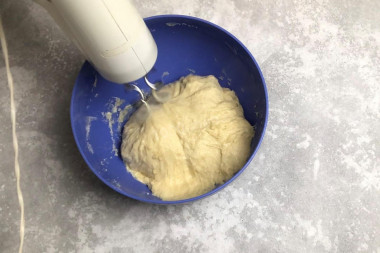
Then I kneaded the dough with a mixer. But you can knead it with your hands. It will be a longer process. The dough is very sticky at first, but do not rush to add flour, too much of it makes baking tough.
Step 9:
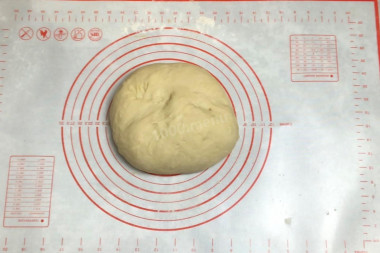
I made the final batch on the table, sprinkled with flour. The dough should become homogeneous, smooth and almost not sticky.
Step 10:

Assemble the dough into a ball and put it in a bowl greased with vegetable oil. Cover the bowl with a towel or cling film. Put it away in a warm place for an hour. I put it in the oven with the light bulb on. The dough should fit, that is, grow in size.
Step 11:

Put the dough that has come up on the work surface. Directly with your hands, form a rectangle out of it. Divide into 15 pieces.
Step 12:

Round each piece — gather the edges to the center, turn the seam down and roll the ball, rotating, but not turning it over with your hand on the table.
Step 13:

Form buns. Take the blank. Flatten it with your fingers into a circle.
Step 14:
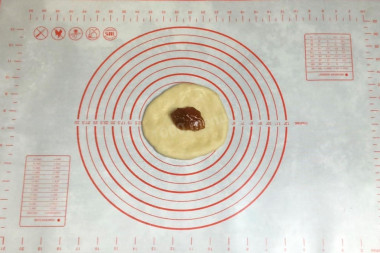
Put a teaspoon of jam in the center.
Step 15:
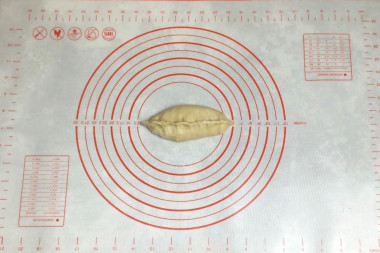
Pinch in the shape of a pie.
Step 16:
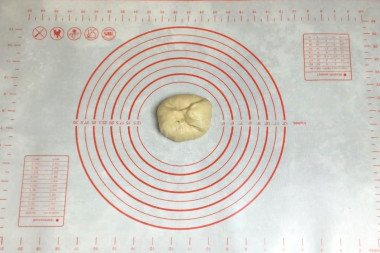
Pinch the edges of the pie to the center as well.
Step 17:

Turn the seam down and round the bun again.
Step 18:
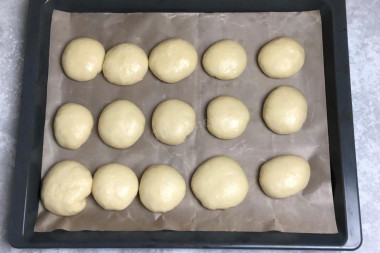
Place the finished buns on a baking sheet: either on parchment, or on a Teflon mat, or on a greased surface. Cover the baking sheet with a towel. Leave the buns to rest for half an hour. Beat the egg and a little milk. Lubricate the top of the buns, then they will be very nicely browned.
Step 19:
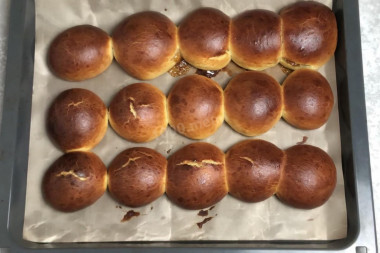
Bake the buns in a preheated oven at t 190 °C. The first 20 minutes in the top-bottom mode, then another 10 minutes in the convection mode. On convection, it is better to watch the buns more carefully, otherwise they may slightly tan. Remove the finished rolls from the oven, cool and serve. Bon appetit!
Butter can be melted in the microwave or in a water bath.
How to melt butter in the microwave?
Cut the butter into small pieces and place it in a special container. To prevent the oil from splashing when heated, cover the oil vessel with a paper towel. The oil should be melted either at the lowest power or in defrosting mode. At first, five seconds will be enough. Next, if the butter has not melted yet, set it again for 5 seconds and start the microwave. Repeat the process several times until the desired result.
How to melt butter in a water bath?
You will need two containers of different diameters. Pour water into a large one and put it on the stove. Place the smaller container on top so that it is submerged in water by about half. Put the sliced butter into it. Under the influence of boiling water, the oil will begin to melt. Stir the oil slightly to speed up the process. As soon as the pieces of oil are completely dissolved, remove the container from the stove.
Be prepared for the fact that flour may need more or less than indicated in the recipe. Focus not on the amount of flour, but on the desired consistency of the dough. To avoid mistakes, read about flour and its properties!
Keep in mind that everyone's ovens are different. The temperature and cooking time may differ from those specified in the recipe. To make any baked dish successful, use useful information about the features of ovens !
Caloric content of the products possible in the composition of the dish
- Whole cow's milk - 68 kcal/100g
- Milk 3.5% fat content - 64 kcal/100g
- Milk 3.2% fat content - 60 kcal/100g
- Milk 1.5% fat content - 47 kcal/100g
- Concentrated milk 7.5% fat content - 140 kcal/100g
- Milk 2.5% fat content - 54 kcal/100g
- Chicken egg - 157 kcal/100g
- Egg white - 45 kcal/100g
- Egg powder - 542 kcal/100g
- Egg yolk - 352 kcal/100g
- Ostrich egg - 118 kcal/100g
- Whole durum wheat flour fortified - 333 kcal/100g
- Whole durum wheat flour, universal - 364 kcal/100g
- Flour krupchatka - 348 kcal/100g
- Flour - 325 kcal/100g
- Granulated sugar - 398 kcal/100g
- Sugar - 398 kcal/100g
- Butter 82% - 734 kcal/100g
- Amateur unsalted butter - 709 kcal/100g
- Unsalted peasant butter - 661 kcal/100g
- Peasant salted butter - 652 kcal/100g
- Melted butter - 869 kcal/100g
- Apricot jam - 265 kcal/100g
- Pear jam - 268 kcal/100g
- Quince jam - 223 kcal/100g
- Apple jam - 265 kcal/100g
- Jam - 265 kcal/100g
- Salt - 0 kcal/100g
- Dry yeast - 410 kcal/100g

